Research and development (R&D) tax credits: Warning…Quality matters!
By: Mark Andrus, national partner in charge of research and development, Grant Thornton LLP
While Congress has been fair to the high-tech industry by extending and expanding the research and development (R&D) tax credit, the Internal Revenue Service (IRS) is watching closely to ensure that the credit only goes to taxpayers who are eligible for it. High-tech taxpayers should be aware of recent IRS guidance that may impact their dealings with the IRS if a claim for the R&D tax credit is raised in examination.
The IRS has reported that the level of R&D tax credit claims filed has significantly increased. This has led to an increase in the claims being audited and moving to the IRS appeals office (appeals). In fact, a recent IRS comment suggests that the number of R&D tax credit cases handled by appeals has doubled in the past few years.
What’s new?
Two events occurred in early 2007 that impact the R&D tax credit audit and appeals environment and may affect taxpayers’ ability to substantiate or defend claims for R&D tax credits.
In February, appeals issued a draft technical guidance titled “Substantiating Research and Experimentation Expenditures” that, if finalized, would expand the R&D tax credit coordination issue. Additionally, appeals proposed that a technical guidance coordinator for the issue be named, and all appeals officers and appeals team case leaders must contact this person to obtain legal arguments and current information, including any settlement guidelines. Appeals further proposed that appeals teams must also maintain contact with the issue coordinator to keep the coordinator apprised of the case status and to obtain review and concurrence before finalizing a settlement.
On April 4, the IRS issued an industry directive stating that the R&D tax credit issue has been designated as a Large and Mid-Size Business Division (LMSB) Tier I issue. As a Tier I issue, the R&D tax credit must be raised by the examination team on audit. Additionally, an LMSB issue owner executive has been named and will be responsible for ensuring that the issue is identified, developed and resolved in a consistent manner across all LMSB cases involving similarly situated taxpayers.
In summary, there are now potentially two individuals — one on the audit side and one on the appeals side (proposed in the draft) — who are calling the shots. Thus, taxpayers should focus on strengthening their documentation and technical positions to substantiate their R&D tax credits.
Coordinated positions
The audit and appeals announcements are so similar that they appear to come from the same group. Taxpayers who may have thought they could take their R&D tax credit case to appeals for a fresh review may find this is no longer a realistic option. There are three core issues that both the audit announcement and appeals guidance raise:
• Appropriate methodology – There are essentially two approaches taxpayers can choose to substantiate R&D tax credits: the project methodology and the department methodology. Under project methodology, a taxpayer starts with a comprehensive list of all development projects. Each project is then analyzed to determine if it meets the definition of qualified research and if so, wages, supplies and contractor costs are gathered for each project. Under the departmental methodology, the taxpayer starts with the organizational chart. Departments or people engaged in qualified research are then identified, and wages, supplies and contractor costs for each department are gathered.
Both of these methodologies have their strengths and weaknesses. Taxpayers seem to prefer the departmental approach because it is more efficient and results in lower record-keeping costs. For example, qualified research cost data is typically more readily available on a departmental (or employee) basis; thus, it takes less time to capture costs on the departmental basis. Most taxpayers prepare R&D tax credit support based on the departmental methodology or a hybrid variation of that method.
The IRS prefers the project methodology. The IRS guidance describes three methodologies for capturing qualified costs: project method, cost center method and hybrid method. In the hybrid system, costs are captured on a cost-center basis; thus, the hybrid method and cost-center method appear to be very similar to the IRS’s. The IRS states that the hybrid method “faces an insurmountable problem, as it lacks nexus between the amount claimed … and the activities claimed.” The project methodology more clearly aligns qualified research activities with qualified costs. Many of the IRS audit tools are designed around a project methodology. For example, the standard information request the IRS uses assumes a project methodology was used.
The clash between the IRS and taxpayers on this issue comes from taxpayers often not being able to provide information in a format that the IRS can easily audit under its current approach.
• Inadequate contemporaneous documentation – This is probably the single greatest frustration for taxpayers claiming R&D tax credits. Audit and appeals typically want to see contemporaneous documents — and lots of them — that support each accretion the taxpayer makes. For many taxpayers, that means finding and maintaining documents from the past — from 1984, to be exact. The IRS’s current view of contemporaneous documentation may not seem too unreasonable until you consider that the final regulations defining research did not include a contemporaneous documentation requirement.
Congress specifically stated that eligibility for the credit is not intended to be contingent on meeting unreasonable record-keeping requirements. The IRS expended significant effort to explain how its demanding approach on contemporaneous documentation does not create an unreasonable record-keeping requirement. However, the reality for many taxpayers may be that without certain documents there will be no credit. The appeals technical guide states that “the consequence of failing to keep sufficient records substantiating a claimed credit may be denial of the credit.”
Even the most detailed and dutiful taxpayer will likely have gaps between the documents maintained and the documents the IRS may deem “adequate.” In these types of cases, taxpayers have relied on the “Cohan rule,” which allows the use of estimates if the taxpayer presents credible evidence that provides a rational basis for the estimate to fill the gaps. This is especially helpful when trying to go back over 20 years to gather information.
Many young high-tech companies with net operating losses may have put off computing R&D tax credits. Every year that goes by without gathering the appropriate documentation increases the risk that the company will fail to have the documentation required to support R&D tax credits in the future.
• Choice of adviser – Both LMSB and appeals commented on taxpayers’ use of advisers in preparing R&D tax credit claims. LMSB is concerned that a growing number of claims are a result of marketing by accounting firms that offer to do the work on a contingent fee basis. The appeals side is concerned with what they call “pro forma submissions” by taxpayers that are based primarily on estimation rather than contemporaneous documentation to support the claim.
In contrast, the IRS recognizes that identifying qualified research activities and qualified costs require a certain level of technical tax knowledge and that the computation issues can be complex. Accordingly, the IRS understands that taxpayers will likely need advice, but the issue becomes from whom the taxpayer seeks that advice.
What can be done?
The R&D tax credit is still available. Congress recently extended the credit through December 2007. Additionally, Congress continues to discuss potential increases to the U.S. R&D credit to ensure it remains competitive with R&D incentives in other countries. High-tech companies should continue to take advantage of this benefit. However, in the current environment, taxpayers need to follow these four steps to increase their chances of sustaining the R&D tax credits taken:
1. Use the project methodology as much as possible. It may take some extra effort to align documentation processes and costing processes to capture qualified R&D costs on a project basis; however, once done, the benefits will carry forward into future years as the R&D credit is extended.
2. Accumulate documentation. There are several different issues that need to be documented surrounding an R&D tax credit claim. Many of the documents needed have probably been generated within the company, but these documents have never been accumulated. Take the time to gather and compile supporting documentation. The key is that the greater the documentation, the greater the likelihood of prevailing.
3. Act now. Many high-tech companies have net operating losses carrying forward and may think that they should not take the time to document R&D tax credits until they start to utilize the credits. Don’t wait; act now. Start to gather the documentation. Immediate action will help drive the quality and relevance of the documents the company generates and will allow action to be taken to improve the documentation as needed.
4. Choose your adviser wisely. Select an adviser that will be there if and when the audit rolls around. And think long and hard about contingent fees as they may bias the IRS against your credit claim even before the audit starts.
Questions?
In Atlanta, contact Ken Schuckers, Partner & Practice leader, Corporate Strategic Federal Tax Services.
404.475.0076, [email=ken.schuckers@gt.com]ken.schuckers@gt.com[/email].
Tax professional standards statement
The content on this web page supports Grant Thornton LLP’s marketing of professional services, and is not written tax advice directed at the particular facts and circumstances of any person. If you are interested in the subject of this document we encourage you to contact us or an independent tax advisor to discuss the potential application to your particular situation. Nothing herein shall be construed as imposing a limitation on any person from disclosing the tax treatment or tax structure of any matter addressed herein. To the extent this document may be considered to contain written tax advice, any written advice contained in, forwarded with, or attached to this document is not intended by Grant Thornton to be used, and cannot be used, by any person for the purpose of avoiding penalties that may be imposed under the Internal Revenue Code.

























